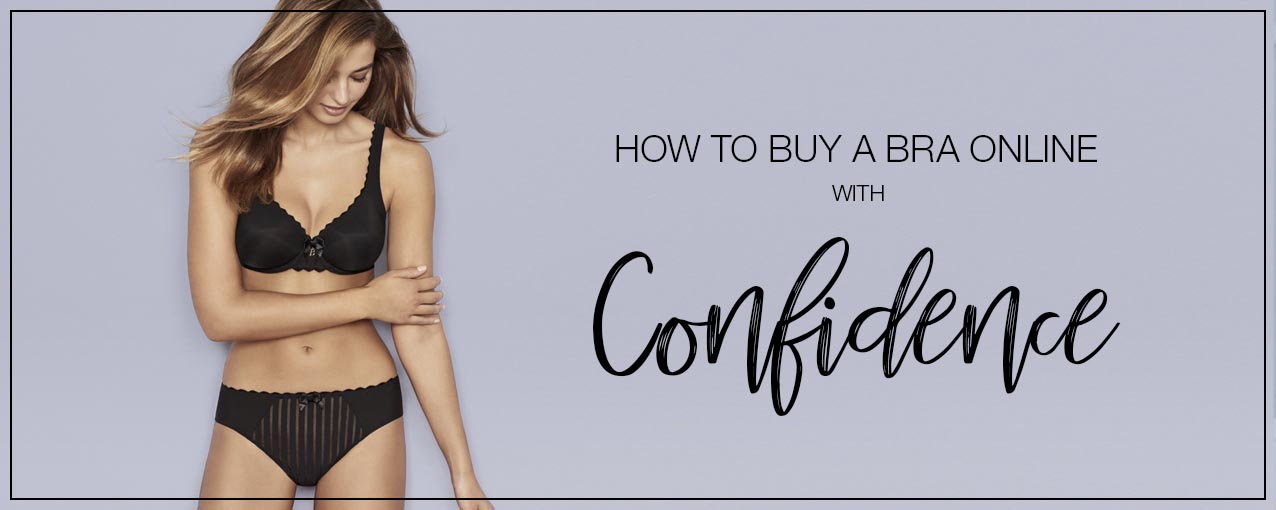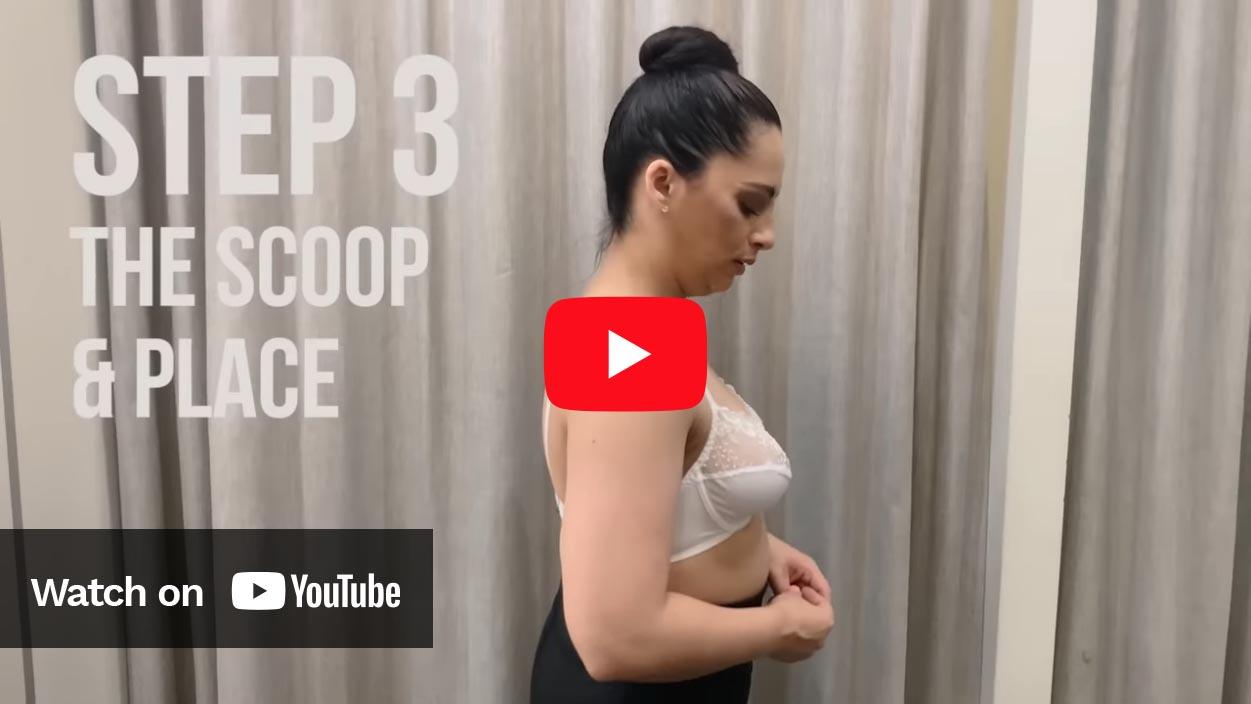Find Your Size
Step 1: Measure for Band Size
Step 2: Measure for Cup Size
Understanding Bra Sizes and Sister Sizes
Look at the chart below where each row shows you the sister sizes. You can use this to find your perfect fit:
In the same band size:
Band size affects bust size:
Sister sizes:
Your Unique Shape
Full at the bottom & shallow on top:
Long and hanging:
For these shapes we recommend:
Different size bust:
Full bust:
For these shapes we recommend:
Naturally firm and full:
Rounded:
For these shapes we recommend:
Heavy and fleshy:
Wide apart:
For these shapes we recommend:
Bra Fitting Tips
How to fit your bra correctly
When the fit is right
THE BAND:
Put two fingers from both hands under the band – it should be nice and firm around you for support. 80% of the weight of your breasts is held in the band, so it’s really important the fit is firm. If you can fit more fingers under the band, it is too loose.
REMEMBER: If your bra is brand new, it will stretch out over time.
If the band is too loose, try the band size down.If the band is too tight, go a band size UP and a cup size DOWN to get the most similar fit – remember those sister sizes!
ADJUSTING THE STRAPS:
If the straps slide off your shoulders, tighten them until they feel comfortable and snug. Do not tighten them too much – you don’t want them to dig in! You should be able to pull the straps up off your shoulders no more than 5 cm.
LOOK AT THE WIRES OF THE BRA:
Run your fingers from the centre of the bra, along the wires to under your armpits. The wires and centre front must sit flat against the body. There should be no gap between the centre front and your body, and the wires should not dig into your body.
MOST IMPORTANTLY:
Is the bra comfortable? It shouldn’t hurt you anywhere and you should feel secure, supported and in love with your silhouette.
What to do if the fit is wrong
IF THE BACK RIDES UP:
The band is too wide. Go down a band size and try the band test by placing two fingers of both hands under the band and testing the firmness.
IF THE CUPS GAPE AND WRINKLE:
The cups are too big. First, try scooping your breasts into the cups – if the cups are still wrinkling, try a cup size down.
IF YOUR BREASTS SPILL OVER THE CUPS:
Or your bra gives you a ‘four-boob’ effect. The cups are too small. Go up a cup size and test the band for firmness too.
POKING AND CHAFING:
If you experience any uncomfortable poking, chafing and parts of the bra are sore on your skin. Chafing usually means the bra is too loose and is able to move around too much. Try a band size down and test the band for firmness as above.

